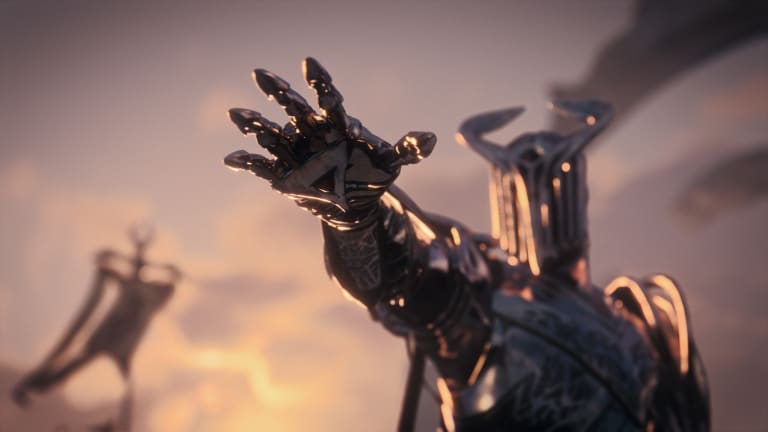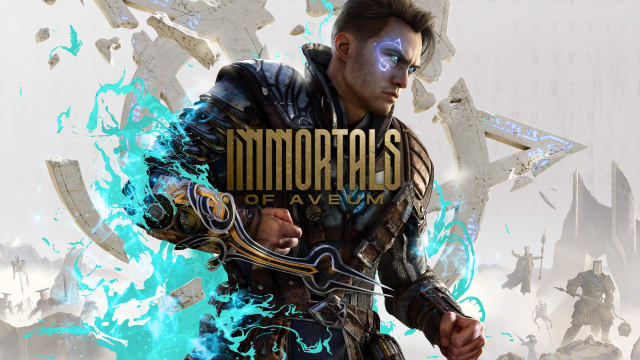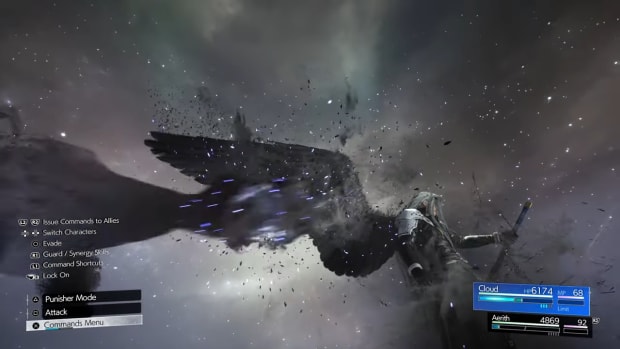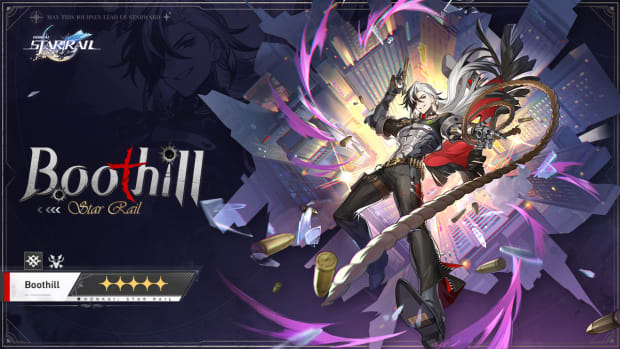
How Immortals of Aveum’s bad guy was almost inspired by a dusty old motorbike

Immortals of Aveum is a single-player FPS game casting players in the role of a mighty battle-mage fighting in the massive Everwar, announced to launch on July 20, 2023, on PC, PS5, and Xbox Series X|S. It’s going to be Ascendant Studios’ debut title and first original IP, which means that the team’s artists had to create the world of Aveum from scratch. This task fell on Dave Bogan, senior art director, and Julia Lichtblau, associate art director, who joined the – at this point – still very small crew after the fall of Telltale Games to bring Immortals of Aveum to life.
Presented with an almost completely white canvas to be creative on, their starting point was a file of concept art from all around the internet compiled by game director Bret Robbins. “The first concepts we did for characters were some of the – I call them the meat and potato characters – swordsmen and archers from the Rasharnian side,” Bogan says. “I’ve learned my lessons in the past of trying to concept and work on main characters first. It’s the thing you want to do first and it feels like the right thing to do, but what I’ve found is you end up redoing them later anyways, because once you get into the groove of things and find the style, you just always revisit those.”
Thus, the first characters created for Immortals of Aveum were the soldiers of the antagonist side of the Everwar, the nation of Rasharn. Lichtblau, responsible for the varied environments, started with a different method: “Oftentimes it was much easier to determine what we didn’t want. There was so much in terms of classic fantasy imagery we knew we didn’t want to go a specific direction with. We didn’t want to do giant skulls and spikes and that sort of thing. We also didn’t want to do purely medieval architecture. We knew that we wanted to add a little bit more of a modern twist to it with some almost sci-fi shape-language to some of our architecture.”
Robbins’ preconceived ideas helped here as well, as he had some specific suggestions for various key locations and cultures found in Aveum, which tie directly into the story and gameplay.
Naturally, a game needs a good-looking villain – from Darth Vader to Sauron, the antagonists need to be memorable. Immortals of Aveum has two main baddies that main character Jak has to contend with: Sandrakk, the powerful warlord of Rasharn, and his mysterious lieutenant, simply known as The Hand.
“It can be hard to find shapes that are memorable and cool and that stick with you,” Bogan explains, “but sometimes they just happen so quickly and they jump out at you and you’re like ‘oh yeah, of course, that one reminds me of this, but it doesn’t look the same. That’s the one we’ve got to use.’” The Hand’s design was such a case – her looks took about a week to nail down.

Battle-mages focus their magic through Sigils worn around their right arm.
Ascendant Studios / EA Originals
Her boss, Sandrakk, has a different development story: “We had a bunch of concepts done for that guy and I think the initial rounds just felt way too over the top and cartoony. There was one version of him where his armor looked like flames, it was really crazy.”
“There was another version where I decided that it needed to look like my dad’s old motorbike. So I’d have this really beautiful kind of mahogany and black lacquered motorcycle tank look that fit with the flames, too. But it ended up being too much like something you would expect to see in a cartoon or something like that,” he says.
Sandrakk went through iteration after iteration and even a year later “we didn’t nail that down.” The actor portraying him in the game had already been cast by that time.
A new character artist joined the team around then, who liked creating concepts in 3D – they usually start as 2D artworks to save time and resources. “His design was so cool, it stuck with us. Then we did a concept over top later, just to pretend we had one before we built that,” Bogan says.
Both Sandrakk and The Hand wear rather elegant looking armor made from iridescent metals. “That sort of speaks to how we wanted to do the unexpected with a lot of our ideas and designs,” Lichtblau adds.
Bogan explains that Sandrakk isn’t an “over the top, super evil man” – he has “his own agenda, his own beliefs, and it’s what he’s doing that is the wrong part. It’s not that he’s this screaming, yelling, angry, evil person.”
You can see how the designs mentioned above, though looking cool, would not have fit the part Bogan describes. “Our writing is more nuanced. Is there really good and bad? It’s more gray. People following their own beliefs, different countries that follow their own directions and rules.”
Speaking of countries, Aveum has a lot more than just Rasharn and Lucium, which the players will fight for. Remnants of fallen civilizations and signs of currently present ones are littered all over Aveum. “There will be all kinds of nice surprises and new areas to explore, new characters to meet. The gear very much reflects the world in a way – the deeper you go, the more it does,” Bogan says. “As artists, we’re just trying to make connections and give meaning to everything we do in the game.
“It’s just a piece of gear you find along the way. Where did it come from? Why does it look that way? Oh, it kind of looks like that other over there? Maybe it’s related to that. I think it’s only natural that artists want to – even if they’re not told to do that – go there.”
Gorgeous characters and environments are one part of Immortals of Aveum, bombastic combat is another. Magic in this world comes in three colors: blue, red, and green. Players can use all three and switch freely between them, having to adapt to enemies with certain weaknesses. How did the art team manage to keep all the glory of the spectacle while maintaining clarity for the players?

The three forms of magic are not just differentiated by color, but also by shapes.
Ascendant Studios / EA Originals
“The way we approached it was just trying to add even more nuance and layers. It’s not purely color, it’s shape and silhouettes that we really leaned into,” Lichtblau explains. “The green magic, yes, it’s a color, but it also has more circular shapes. And so that’s echoed in the shapes of the crystals, it’s sort of echoed in the shapes of the enemies. Even if you’re seeing them from a distance, you’re able to recognize the shape of their helmet.”
Up close, the team added details to the uniforms and armor of enemies, such as red triangular shapes for enemies weak to the red magic, and the same goes for puzzles in the environment that need a specific color of magic to solve.
Bogan adds: “We don’t want to lead the player by such a tight leash all the time. You want the players to feel smart like they’ve figured things out, so there’s a fluctuating variety of hand holding that goes on to lead the players to know what to do.”
Things start to become very clear once an enemy starts blasting their colored magic in your direction in any case.






